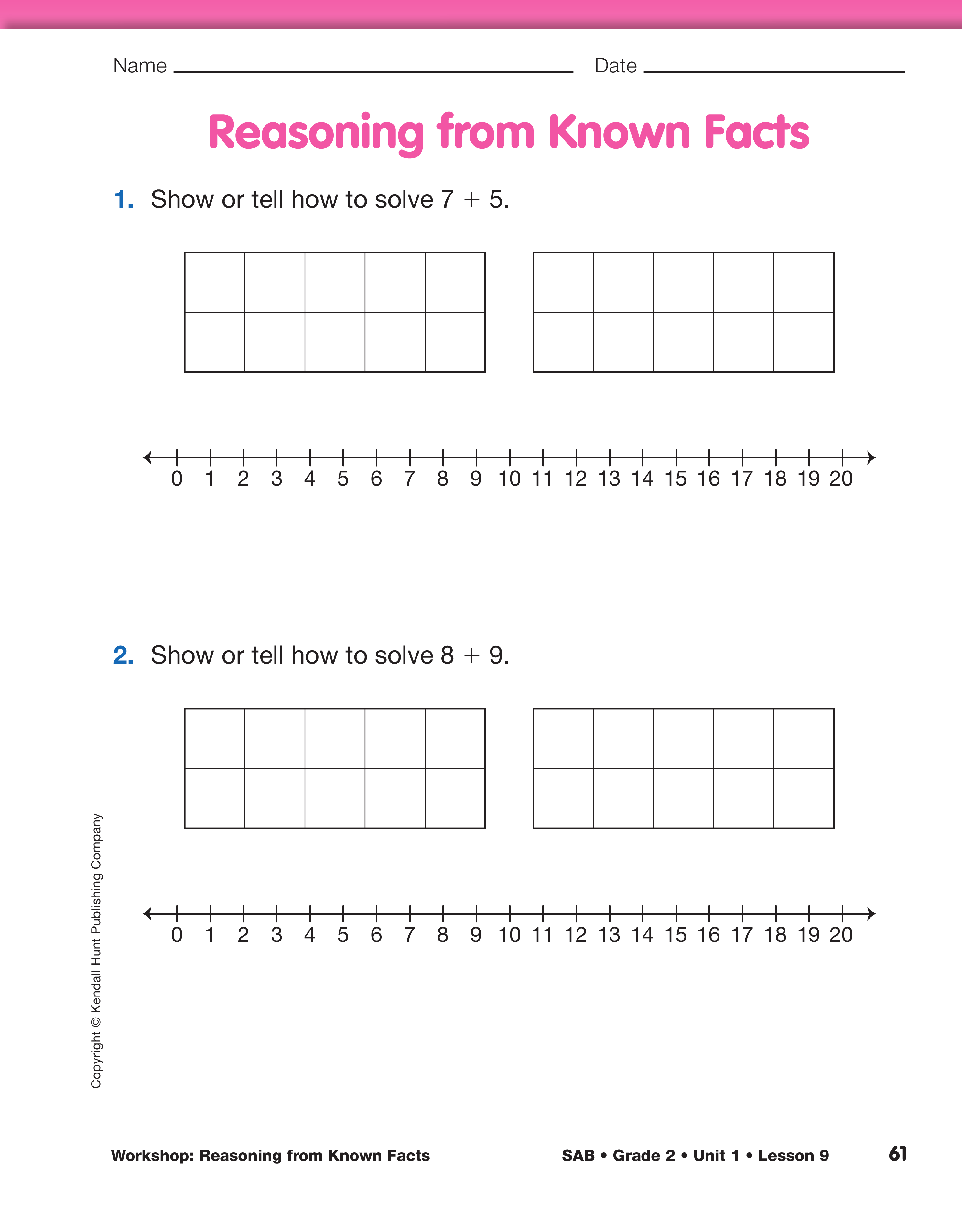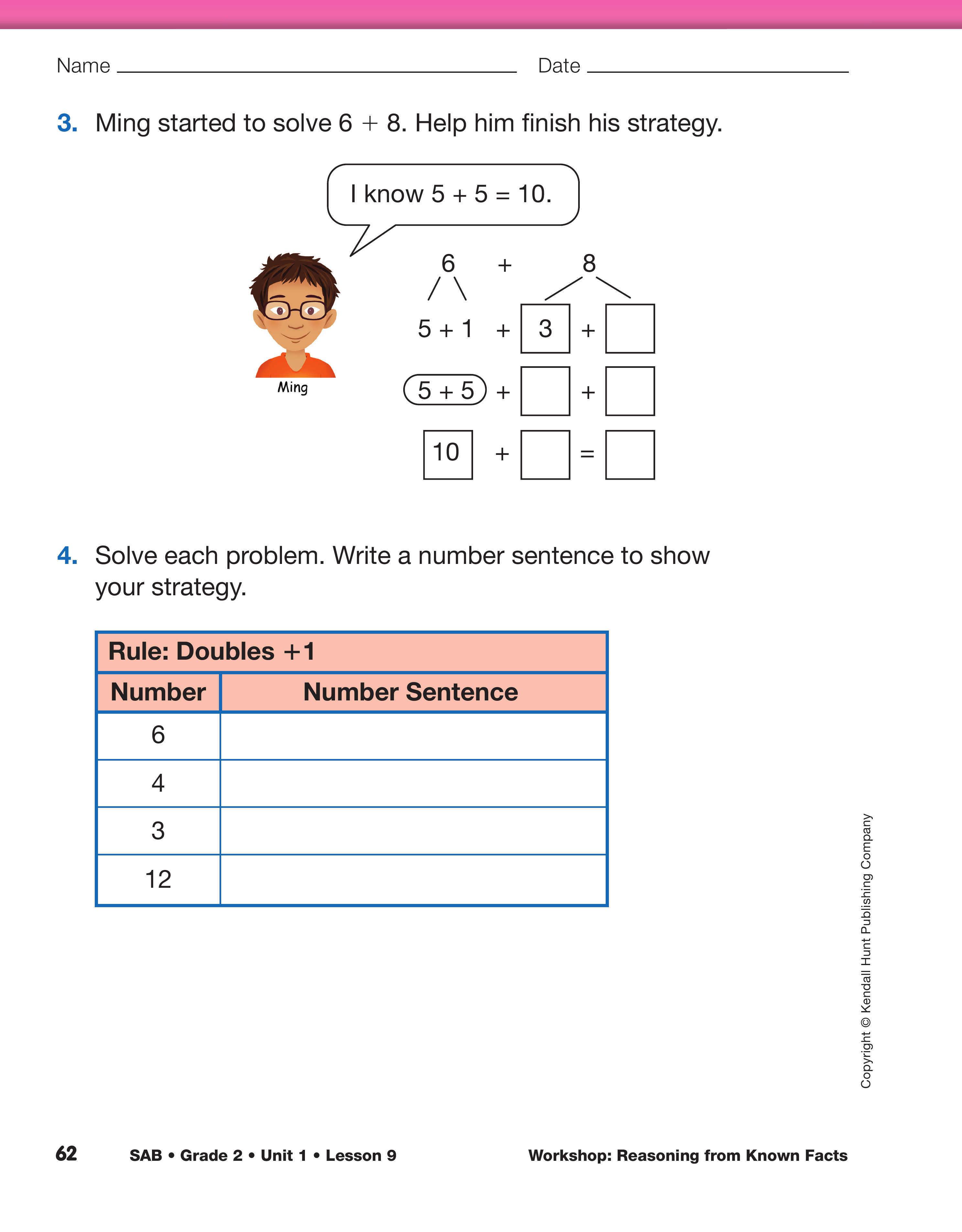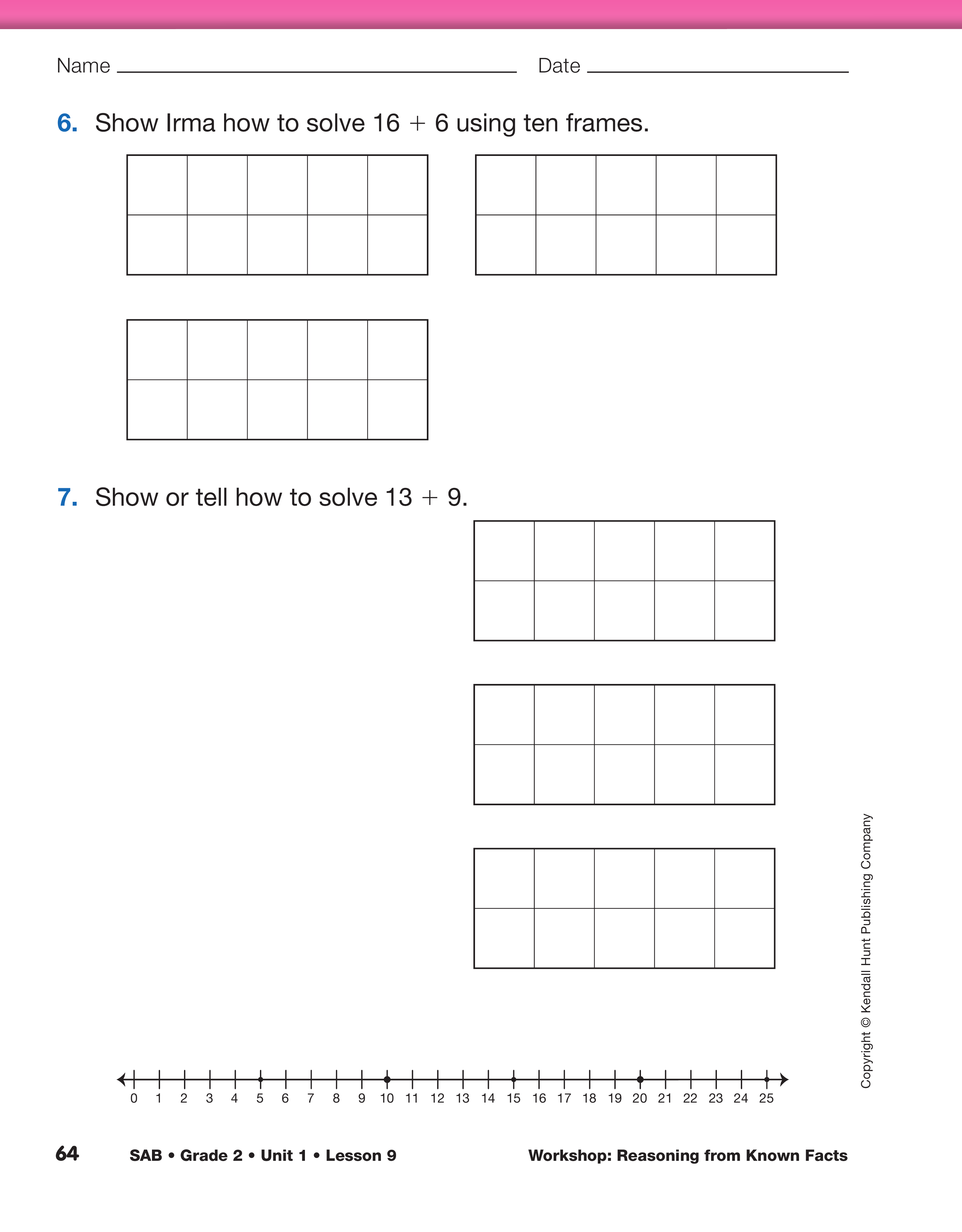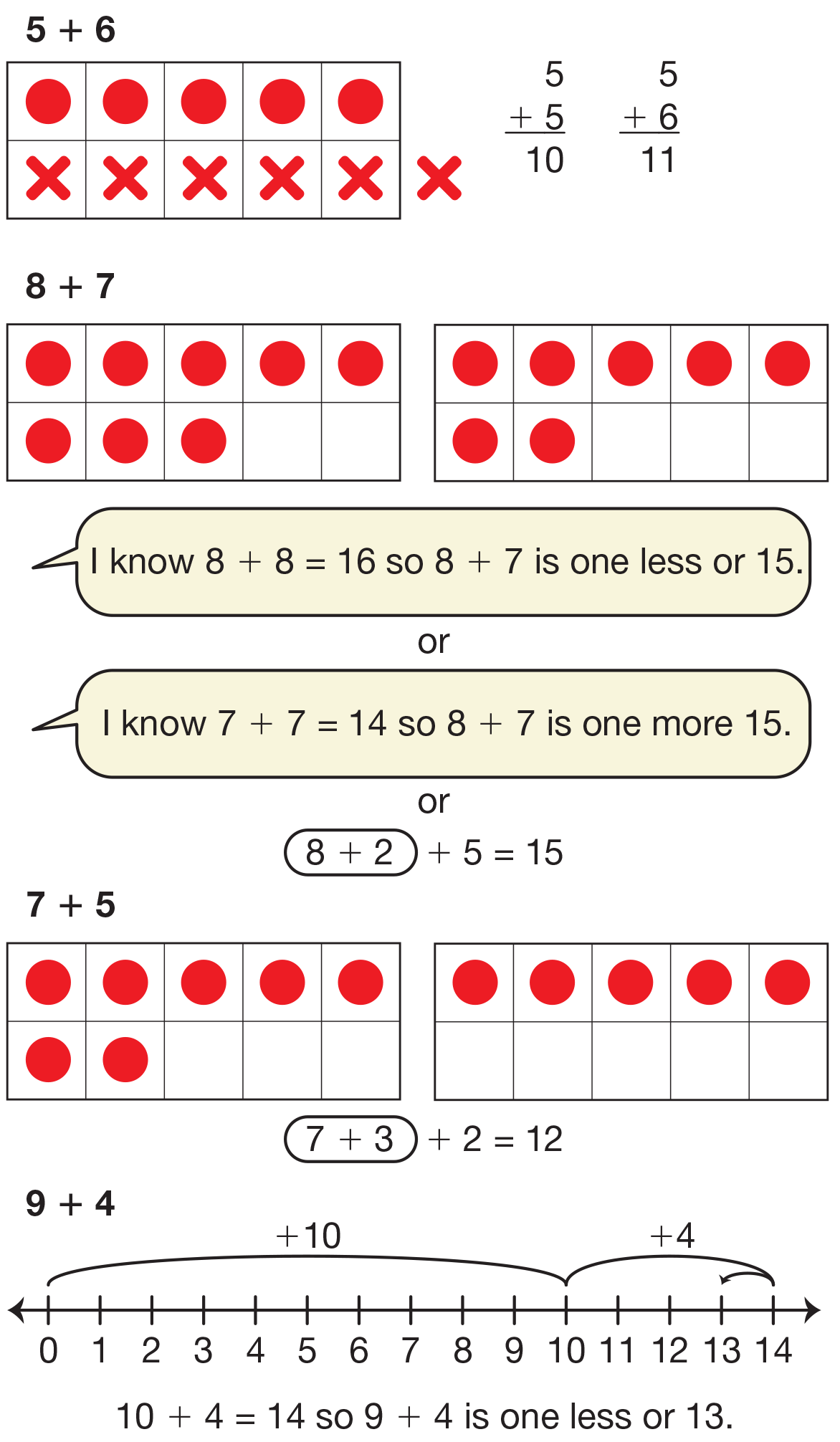Workshop: Reasoning from Known Facts
Est. Class Sessions: 2Summarizing the Lesson
Write the following addition facts on the board. Have connecting cubes available to students who may need them as a direct model.
5 + 6 8 + 7 7 + 5 9 + 4
Ask:
Ask students to choose one of the other problems on the board and name a fact that would help them solve the addition problem.
After a few minutes, ask some students to share the known fact and strategy for solving each problem on the board. See Figure 4.
Ask student to complete the Reasoning from Known Facts pages in the Student Activity Book independently. Questions 1–4 should be problems most students can solve. Questions 5–7 extend this reasoning to slightly larger numbers. This will help you differentiate students who are ready to extend and apply this reasoning. Encourage all students to try the problems. The problems are supported with ten frames and number lines so all students should be able to use a direct model to solve the problem if needed.


















